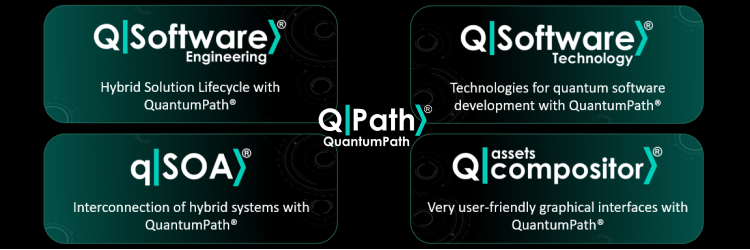José Luis Hevia, Mario Piattini and Guido Peterssen, members of aQuantum, have co-authored the article entitled “Advantages of QuantumPath® for Quantum Software Development” published in The QPath Blog.
In this article, the authors expose the conceptual and practical differences between programming and quantum software development and, from this, present the importance of software development for the adoption of quantum computing by the industry.
The authors, based on their extensive experience in Software Engineering and Programming, explain why, to develop professional, industry-ready quantum software that provides guarantees of quality, security, extensibility, high performance, and scalability, in addition to the programming language and source code management application, a set of tools and solutions is needed to work through each phase of development. The importance of these tools in the software development process is such that, if the most relevant tools and solutions to achieve this are not integrated, the development process becomes more complex, but if most of them are, or are easily integrated through plugins. or other resources, the development process is more fluid and increases both productivity and quality of solutions.
In order to show the importance of integrated tools for quantum software development, the authors show how QuantumPath®, a platform designed to facilitate the development of industry-ready quantum software, offers a set of advantages for professional quantum software development, which grouped as follows:
- Programming of quantum algorithms through graphical user interfaces (GUI).
- Dynamic integration of hybrid quantum/classical software systems
- Tools for the application of software engineering best practices
- Technologies specially designed for professional quantum software programming and development with QPath®
The authors make these extensively refined solutions available to users through QPath® so that, like them, they can be more productive by reducing the average development and integration time of quantum algorithms by approximately 70% for quantum gate-based devices and 85% for annealing devices.
Finally, the authors conclude that making QuantumPath® available to users is their way of contributing to accelerating the adoption of professional quantum/classical industry-ready hybrid quantum software development, and thus making a practical contribution to democratizing access to quantum computing.
You can access QuantumPath® and experiment with these solutions for developing high-quality quantum software here.
The aQuantum Team congratulates Guido, Pepe and Mario for the publication of this article.
You can see all the articles and other papers published by aQuantum here.


Recent Comments